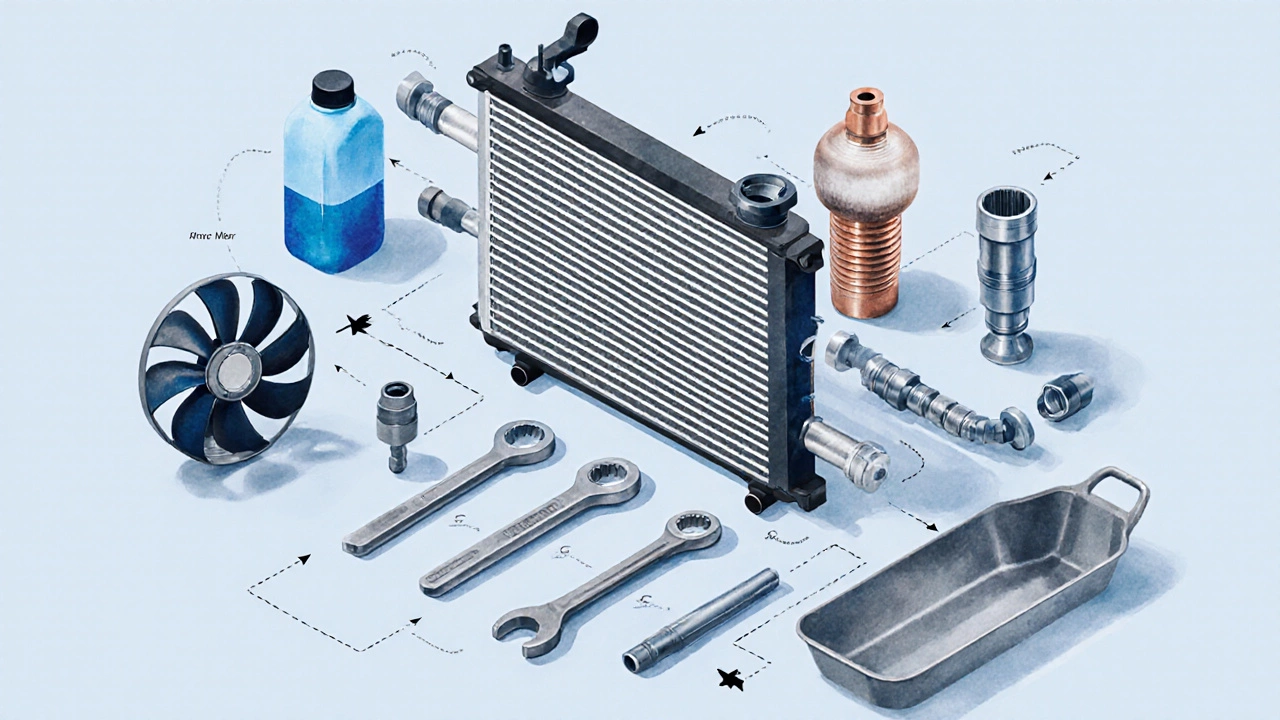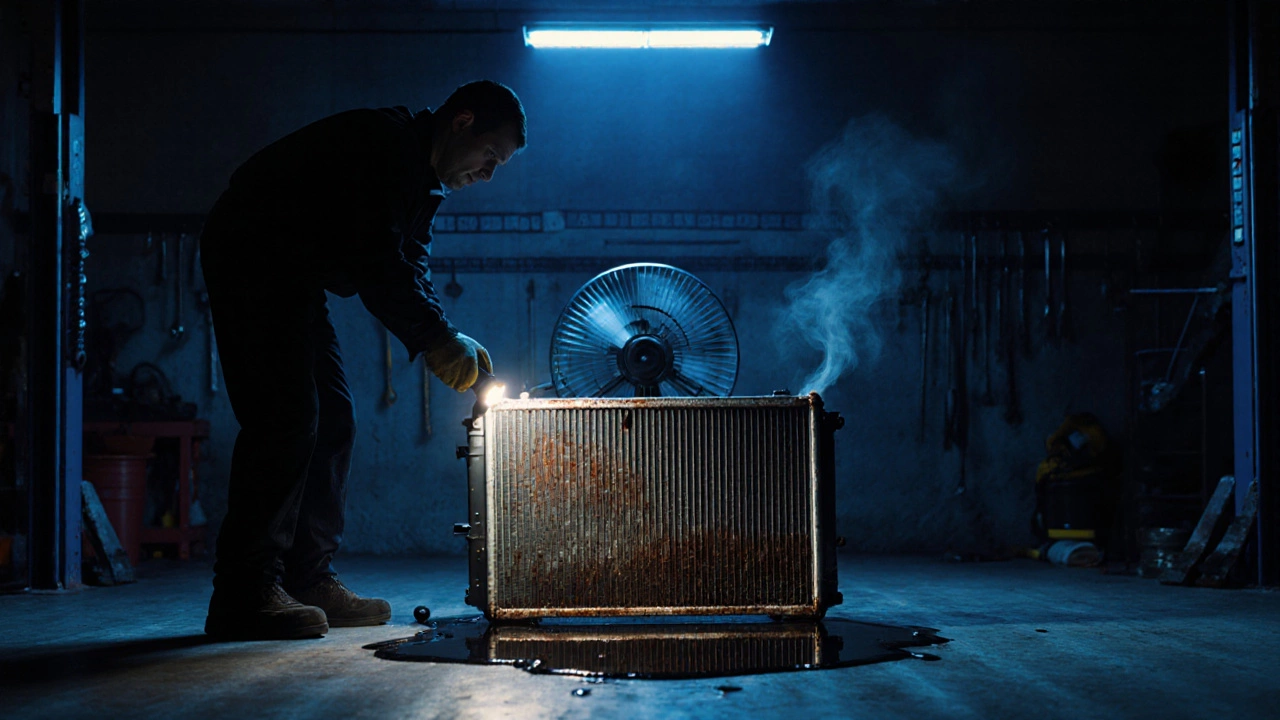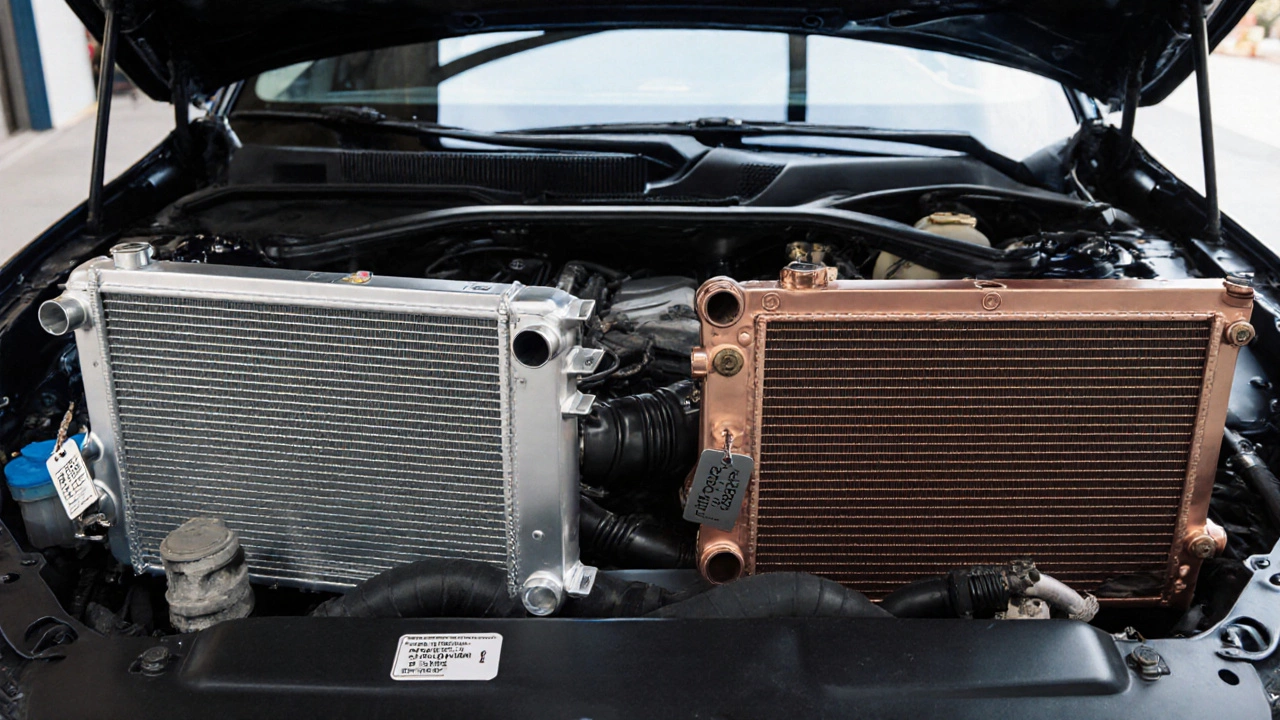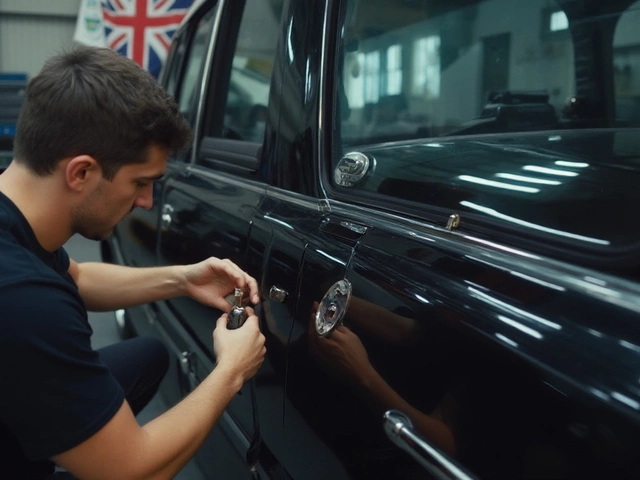Radiator Replacement Cost Calculator
Estimated Total Cost:
£0.00
Quick Takeaways
- Typical replacement price in the UK ranges from £120 for a basic aluminium unit to £350+ for a premium copper or high‑flow model.
- Labor adds £80‑£150 depending on part‑time vs full‑time garages.
- OEM radiators cost 20‑40% more than reputable aftermarket options.
- DIY fit‑replace can save £60‑£120 if you have basic tools and a service manual.
- Watch for overheating, coolant leaks, or a whining fan as early warning signs.
What Is a Car Radiator?
Car radiator is a heat‑exchanger that transfers engine heat to the ambient air, keeping the engine at optimal operating temperature. It sits at the front of the engine bay, connected to the coolant circulation system, and works together with the thermostat, fan, and pressure cap.
Why Does the Price Vary So Much?
Three big factors drive the price tag:
- Material: Aluminium radiators are lightweight and cheap to cast, while copper‑brass cores are heavier but offer better heat dissipation.
- Design: High‑flow or “performance” radiators have larger core sections and custom fin patterns.
- Origin: Original Equipment Manufacturer (OEM radiator) parts are priced for brand consistency, whereas aftermarket alternatives often provide similar performance for less.
Material Showdown: Aluminium vs Copper
| Attribute | Aluminium radiator | Copper radiator |
|---|---|---|
| Typical price (UK) | £120 - £200 | £250 - £350+ |
| Weight (kg) | 8 - 12 | 15 - 22 |
| Heat dissipation (kW) | ≈ 40 | ≈ 45 - 50 |
| Corrosion resistance | High (treated aluminium) | Medium - needs regular coolant maintenance |
| Typical lifespan | 8‑12 years | 10‑15 years |
Aluminium wins on price and weight, making it the go‑to for most daily drivers. Copper shines in high‑performance or heavy‑duty applications where every degree of cooling matters.

Core Components That Add to the Cost
Beyond the main heat‑exchange core, several peripheral parts influence the final bill:
- Radiator fan - Electric fans cost £30‑£70, but high‑speed models can push the price higher.
- Radiator pressure cap - Essential for maintaining system pressure; typically £15‑£35.
- Radiator coolant - The type of coolant (glycol‑based, OAT, or hybrid) affects longevity; a 5‑liter bottle runs £10‑£25.
When you get a quote, ask the garage to itemise these so you understand where the money goes.
Labor Costs: What to Expect at a Garage
Most UK repair shops charge an hourly rate between £70 and £120. Replacing a radiator usually takes 1.5‑2 hours, so labor adds roughly £100‑£150. Independent garages often sit at the lower end, while franchised dealers charge premium rates.
If the vehicle needs a coolant flush, hose replacement, or fan repair, factor in an extra £50‑£100.
DIY vs Professional Fit‑Replace
Doing it yourself can shave off the labor cost, but you need the right tools and a service manual. Here’s a quick checklist:
- Drain the coolant into a sealed container - avoid spilling on paint.
- Label and disconnect the upper and lower radiator hoses.
- Unbolt the fan assembly and remove the radiator mounting brackets.
- Slide the old radiator out, inspect the mounting points for rust.
- Install the new unit, re‑attach hoses, reinstall the fan, and refill with the correct coolant type.
- Bleed the system to purge air bubbles - a common cause of overheating after a DIY job.
For a typical sedan, the parts alone cost £150‑£250. Subtract the £80‑£120 you’d otherwise pay for labor, and you could save £70‑£130. Just remember to dispose of old coolant responsibly - most local councils have collection points.
When Is It Time to Replace?
Pay attention to these symptoms:
- Engine temperature gauge creeping into the red zone.
- Coolant puddles under the car - often a sign of a cracked core or loose hose.
- Visible rust or corrosion on the radiator fins.
- Unusual whining or grinding noises from the fan motor.
- Repeated overheating after a coolant flush.
If two or more of these appear, it’s wise to get a professional inspection. Ignoring a failing radiator can lead to head gasket failure, which costs several thousand pounds to repair.

Choosing Between OEM and Aftermarket
OEM radiators guarantee fit‑for‑purpose dimensions and are built to the same specifications as the original part. However, they often carry a 20‑40% premium. Reputable aftermarket brands (e.g., Mishimoto, Spectra Premium) use similar materials and can even offer better flow rates.
When budgeting, ask your garage for both options and compare:
- Warranty length - aftermarket may offer 2‑year guarantees.
- Heat‑dissipation ratings - performance‑focused units list higher kW values.
- Availability - aftermarket parts are often stocked locally, reducing lead‑time.
In most everyday driving scenarios, a high‑quality aftermarket aluminium radiator provides the best value.
Bottom‑Line Cost Summary
| Item | Low End | Mid Range | High End |
|---|---|---|---|
| Radiator (aluminium, OEM) | £120 | £180 | £250 |
| Radiator (copper or performance) | £250 | £320 | £400+ |
| Labor (independent garage) | £80 | £110 | £150 |
| Additional parts (fan, cap, coolant) | £30 | £60 | £100 |
Adding everything up, a standard replacement sits between £230 and £560. High‑performance setups can climb above £800.
Frequently Asked Questions
How long does a car radiator typically last?
A well‑maintained aluminium radiator will usually last 8‑12 years, while a copper unit can reach 10‑15 years if the coolant is changed regularly.
Can I use any type of coolant with a new radiator?
Most modern radiators are compatible with OAT (Organic Acid Technology) fluids, but always check the vehicle’s service manual. Mixing coolants can cause corrosion.
Is it cheaper to buy an aftermarket radiator online?
Yes, reputable online retailers often price aftermarket aluminium radiators 15‑30% lower than local garages. Factor in shipping and possible return fees.
Do I need to replace the thermostat when I change the radiator?
Not always, but it’s a good preventive measure. A stuck thermostat can defeat a brand‑new radiator’s efficiency.
What are the signs of a failing radiator fan?
A whining noise, intermittent operation, or the fan not kicking on at idle temperatures are clear indicators that the fan needs attention.
Next Steps
If you suspect a problem, start by checking the coolant level and inspecting the radiator for visible leaks. Take photos and note any rust or damaged fins, then call a local garage for a quote that breaks down parts and labor. For the DIY‑inclined, gather a set of basic hand tools, a drain pan, and a fresh batch of the correct coolant. Remember, a properly functioning radiator protects the engine and can save you thousands in repair bills down the road.




